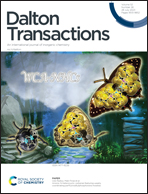Modulating surface electron density of Ni(OH)2 nanosheets with longitudinal Ti3C2Tx MXenenanosheets by Schottky effect toward enhanced hydrogen evolution reaction†
Abstract
Due to their low cost and excellent electrocatalytic performance, nickel-based hydroxides are widely used as hydrogen evolution catalysts for large-scale hydrogen production by water electrolysis. In this study, a heterostructured composite with improved electron transport and modulated electron surface density was prepared by combining Ni(OH)2 with two-dimensional layered Ti3C2Tx (Ti3C2Tx-MXene). Ni(OH)2 nanosheets were formed on nickel foam (NF) substrates using acid etching, followed by the longitudinal growth of negatively charged Ti3C2Tx-MXene on positively charged Ni(OH)2/NF via electrophoretic deposition. The resulting structure facilitates spontaneous electron transfer from Ti3C2Tx-MXene to Ni(OH)2/NF by means of the Mott–Schottky heterostructure effect and establishes a continuous electron transport path which effectively increases the concentration of active sites, improving hydrogen evolution during water electrolysis. The obtained electrode is characterized by an HER overpotential of 66 mV (vs. RHE) and a Tafel slope of +105 mV dec−1 at a current density of 10 mA cm−2, combined with good electrochemical stability.



 Please wait while we load your content...
Please wait while we load your content...